Research
Anirban Mondal
Our group aims to develop computational approaches to improve our understanding of molecular materials and accelerate the discovery of functional materials for applications in energy and sustainability. Our study materials include organic semiconductors, ion conductors, framework compounds, and hybrid molecule-metal interfaces. We are excited about their potential applications in many technologically relevant fields, such as organic light-emitting diodes, solar cells, solid-state batteries, and fuel cells. Our research also extends to light-driven photocatalysis for water splitting and other essential reactions, aiming to contribute to renewable energy solutions.
To address the fundamental and challenging aspects of these complex systems, we combine first-principles electronic structure theory with multiscale methods and data-driven machine-learning approaches. We often compare our computational predictions to experimental results reported in the scientific literature or collaborate directly with experimentalists. Our work is thus highly collaborative and multi-disciplinary, combining chemistry, physics, materials science, chemical engineering, and computer science expertise.
In addition to our core research areas, we are committed to developing new computational tools and methodologies to further the field of material science. Our group is driven by the desire to make impactful contributions to the development of sustainable technologies and to train the next generation of scientists and engineers in cutting-edge computational techniques.
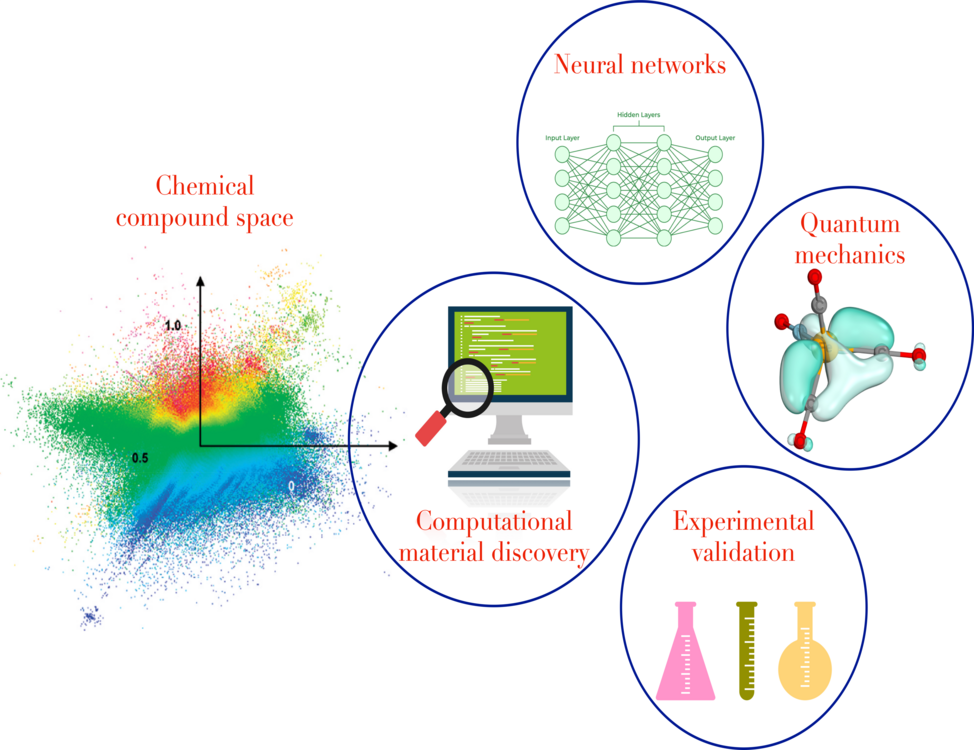

Bhaskar Dutta
We are a Chemical Biology group that is interested in the design and development of molecules capable of precisely affecting biomolecular targets. Specific themes of our current work are briefly as follows. (1) Dyes with Distinctive Optical Properties for Interacting with Biomolecules: Revolutionary advances in molecular biology and biotechnology have been facilitated by the discovery of chromophores that enable biomolecular visualization. We have been working on a novel class of dimerc cyanine dyes with unique propensity for self-assembly and de-aggregation mediated fluorescence sensing. (2) Design and Development of Multi-Target Ligands: Lead identification and development are key steps in the drug discovery process. We are engaged in the search for new leads using the relatively recent approach of dual action or design multi-target ligands (DML).(3) Enzyme modulation and application via novel constructs: We are involved in the development of nanoconstructs that exploit enzyme action towards fulfilling clinical and environmental applications. Our work relies on a combination of Biochemistry, Organic Chemistry and Analytical Chemistry.
Biswajit Mondal
Decarbonizing energy systems and reducing greenhouse gas emissions are critical priorities due to the increasing global energy demand and pollution from fossil fuels. Hydrogen (H₂) fuel is a promising alternative green energy source. However, the predominant industrial methods for large-scale H₂ production—steam reforming and coal gasification—generate CO₂, a significant greenhouse gas. Therefore, H₂ production through hybrid water electrolysis combined with CO₂ mitigation represents a sustainable strategy.
Our research group (Energy & Sustainability lab) at IIT Gandhinagar is dedicated to developing suitable catalysts for these purposes. We primarily employ electrochemistry and photoelectrochemistry to carry out transformations and to understand the underlying mechanisms. To elucidate these mechanisms and to identify and characterize the catalysts and the transformed products, we use various spectroscopic tools.
Currently, our research goals are photoelectrochemical biomass oxidation, CO2 reduction beyond C1 products, electrochemical N-N bond formation, development of anodic catalysts for acidic water electrolysis and role of electron proton transfer mediators in catalysis

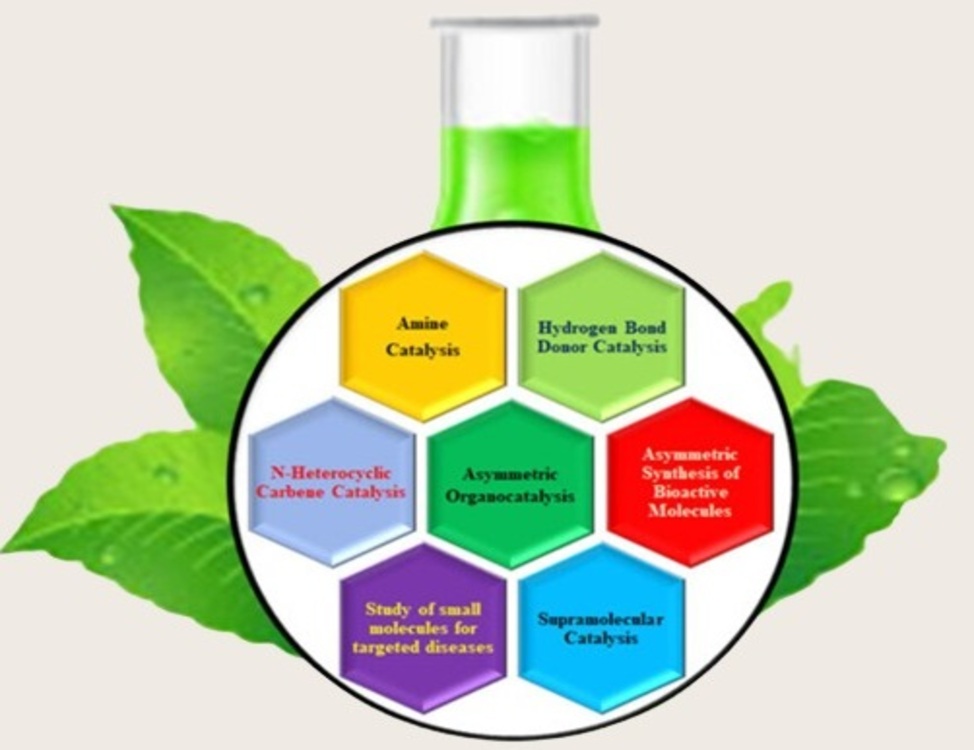
Chandrakumar Appayee
Asymmetric synthesis is one of the most demanding areas of research in pharmaceutical industry due to the importance of single enantiomers as drug molecules. Our group focuses on asymmetric catalysis for the synthesis of enantiomerically pure bio-active small molecules. We are interested in the development of organocatalysis to meet various challenges present in asymmetric synthesis. For this purpose, we design novel catalysts and develop new methodologies to improve chiral selectivity’s in the existing and new organic reactions. We use chiral organocatalysts that are having different catalophores and chirophores to activate substrates for achieving high enantioselectivity. We are also interested in devising a supramolecular host-guest catalytic system for the useful asymmetric organic transformations.
Iti Gupta
(Theme 1) Photo-Dynamic Therapy of Cancer: The lab is engaged in the synthesis of a variety of macrocyclic molecules such as corroles, metallo-porphyrins, diaza-porphyrins, Boron-dipyrromethenes (BODIPYs) and metal dipyrrinato complexes. The porphyrin and BODIPYs molecules prepared by the group have shown appreciable ROS (Reactive Oxygen Species) generation and cytotoxic properties in lung, skin and breast cancer cells, under both light and dark conditions. The group also reported Aza-BODIPYS derivatives with strong absorption in the red region (600-750 nm) with good Stokes shift (300-400 nm), they can potentially be used for bioimaging/diagnosis of the deep-seated tumors. They have also demonstrated through in-vitro anti-cancer studies that, sugar linked BODIPYs / porphyrins / Ir-dipyrrinato complexes can penetrate and localize in mitochondria and/or ER of cancer cells. Some zinc porphyrins prepared by the group showed attractive IC50 values (4.5 to 6.2 microM, in light) against lung / breast cancer cells. The sugar conjugated Ir-complexes exhibited huge Stokes shifts (4000-6000 cm-1) and high amount of ROS generation (80-90%) making them ideal candidates for PDT and bioimaging of tumors.
(Theme 2) Photo-catalysts Design & Applications: Her group has recently synthesized zinc-porphyrins, 21-thiaporphyrins and corroles with electron rich heterocycles and tested their applications in photo-redox catalysis. The porphyrin/corrole molecules exhibited excellent photo-catalytic properties with 0.5 to 1 mol% catalyst loading in the C-H arylations and C-N borylation reactions, with yields up to 80%. For photo-oxidation of aromatic compounds and sulfoxidaion reactions, the product yield was achieved up to 96% using Pd(II) and Re(I) dipyrrinato complexes.


Manisha Samanta
We are a solid-state chemistry group with a passion for exploring the intricate chemistry of technologically important energy materials. To address the growing need for sustainable energy solutions, our research group at IIT Gandhinagar focuses on the synthesis of inorganic solids, particularly metal chalcogenides and topological quantum materials (TQM) and understanding their structure- property correlations for sustainable energy conversion applications. Our major research areas include:
(1) Solid-state chemistry of metal chalcogenides and TQM of varied dimensionalities; (2) Design and development of efficient catalysts based on TQM to advance clean energy fuel technologies, such as Hydrogen Evolution and CO2 Reduction; (3) Investigation of the electrical and thermal transport properties of bulk/nano-structured metal chalcogenides and TQM for thermoelectric applications; and (4) Development of innovative synthesis methods for inorganic materials of technological importance including modular bulk materials, and understanding their structure-property correlations.
Partha Pratim Roy
We are ultrafast spectroscopy research group, who aims to develop femtosecond time-resolved spectroscopy tools to understand the fundamental photochemistry in complex condensed phase systems. The systems of our current research interests include organic photovoltaics, perovskites, organic optoelectronics, and biomimetic molecular aggregates, which hold promise for a range of technologically relevant applications, including sustainable energy generation and advanced low-cost optoelectronic devices.
We are targeting to build the state-of-art coherent multidimensional spectroscopic techniques, including Time-resolved coherent Raman spectroscopy, Two-dimensional electronic spectroscopy (2DES), and Two-dimensional electronic-vibrational spectroscopy (2DEVS). These advanced spectroscopy tools offer unique opportunity to probe coherent electron-nuclear interactions that often drive the ultrafast energy and electron transport processes governing the photon conversion efficiency in photovoltaic materials. By utilizing these techniques, we seek to unravel fundamental molecular mechanisms of light energy conversion.
Two major research avenues of our group are: (i) investigating the coherent photophysical dynamics of excitons, charge carriers, and polarons, along with their interactions with lattice vibrations, to optimize and tailor the performance of organic solar devices; and (ii) elucidating the vibronic mechanisms underlying thermally activated delayed fluorescence (TADF), which has emerged as a prominent research theme in the past decade for enhancing the efficiency of organic light-emitting diodes (OLEDs) and related technologies.

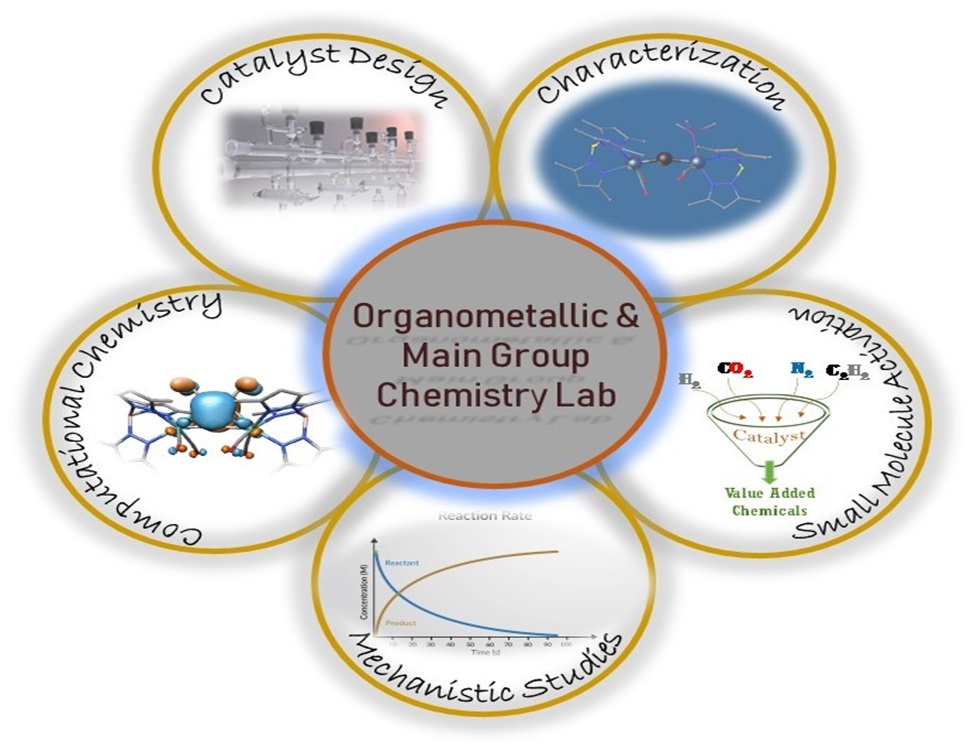
Priyabrata Ghana
Catalytic conversion of cheap and abundant raw materials into value-added chemicals is one of the main frontiers in synthetic inorganic chemistry. Our research group focuses on the development of new catalytic systems for the conversion of cheap and abundant small molecules, such as dinitrogen (N2), carbon dioxide (CO2), dihydrogen (H2), and hydrocarbons to value-added chemicals/materials. We are targeting the synthesis of homogeneous catalysts for such catalytic transformation based on cheap and non-toxic main group elements as well as transition metals and understanding the mechanism of relevant catalytic processes at the molecular level with the help of a diverse array of experimental and theoretical methods. Some of our major research directions are as follows (I) The chemistry of low-valent main group compounds; (II) Application of low-valent main group compounds in small molecule activation; (III) Complexes with transition metal-main group element multiple bonds; (IV) Small molecule activation with 3d transition metal complexes.
Sairam Swaroop Mallajosyula
Our group employs advanced computational methods to investigate systems at the intersection of biology, materials science, and nanotechnology. We emphasize both method development and practical applications, actively contributing to the CHARMM (Chemistry at Harvard Molecular Mechanics) force field. Our work has significantly advanced both additive and polarizable force fields. Currently, we are engaged in several key research areas: (i) Force Field Development: Enabling simulations of traditional medicines.(ii) Dynamics at the Graphene-Aqueous Interface: Focusing on nanopore sequencing technology. (iii) Carbohydrate Dynamics: Exploring implications for drug discovery. (iv) Post-Translational Modifications: Investigating their role in disease states.
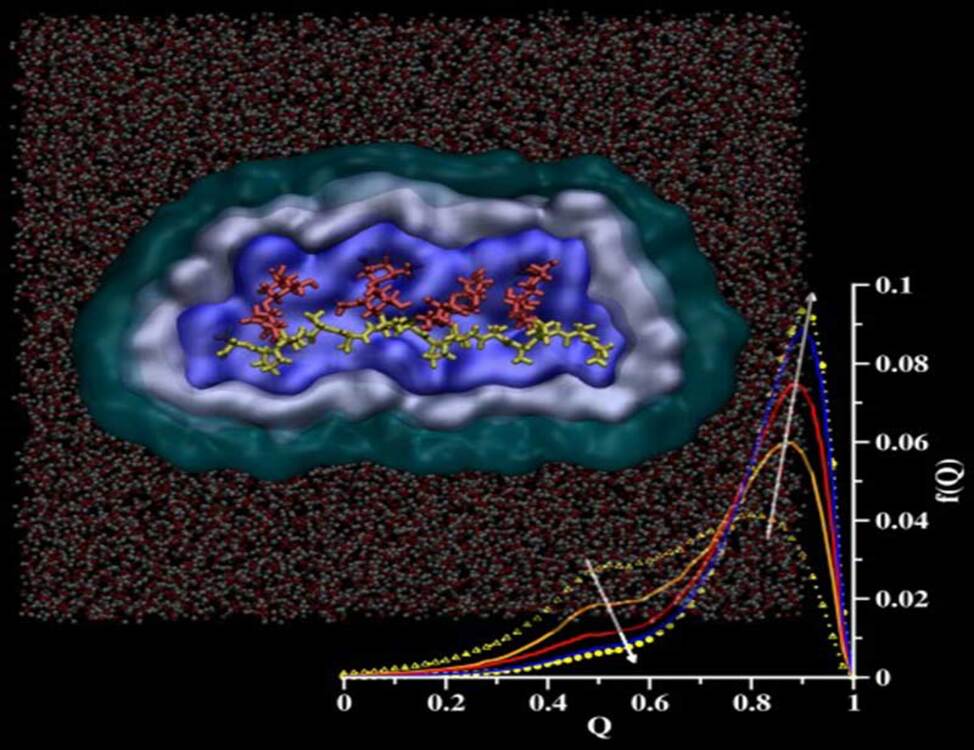
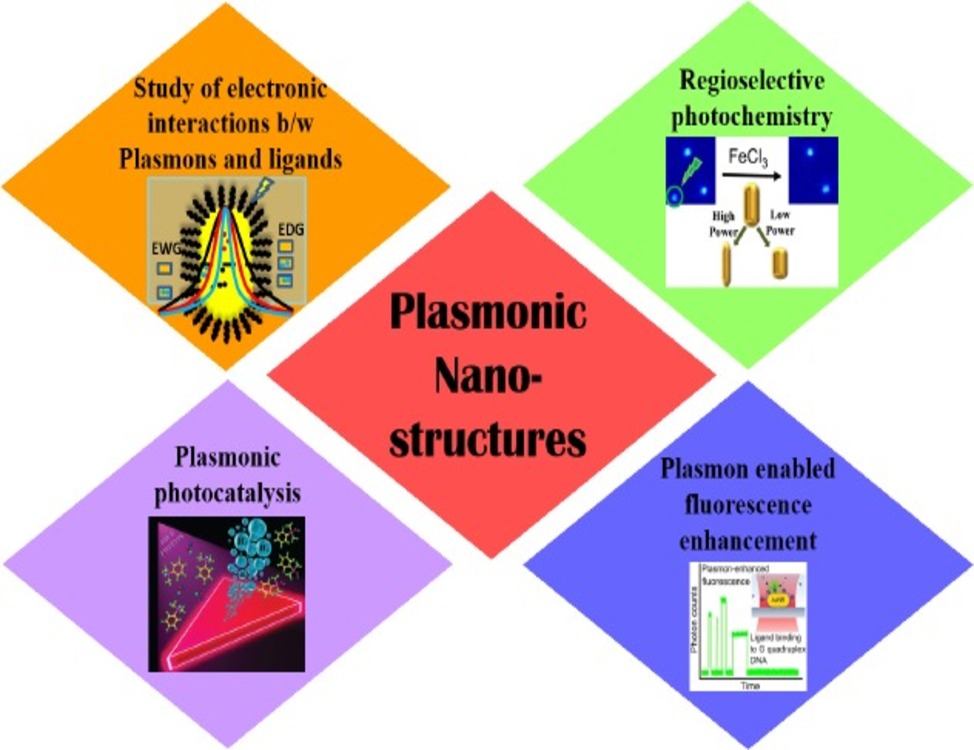
Saumyakanti Khatua
Sivapriya Kirubakaran
Cancer is considered to be a global health problem. Moreover, the increasing resistance to the established anticancer drugs is of grave concern. Deregulation of the kinase activity has emerged as a major mechanism by which cancer cells evade normal physiological constraints on growth and survival. Such aberrant functions of the kinases in a cancer cell have highlighted them as one of the most successful families of drug targets. Our research group at IITGN focuses on the chemical biology of cancer-related protein kinases involved in the DNA damage response pathways which can be used as targets for the anti-cancer therapy. We use small molecule inhibitors approach to study these proteins so as to develop new age cancer therapeutics. We focus on designing inhibitors with myo-inositol phosphate, quinoline and pyrimidine amine based scaffolds. We strategically choose the best inhibitors by performing in-silico SAR studies with the help of molecular docking, MD simulations followed by biochemical validations.
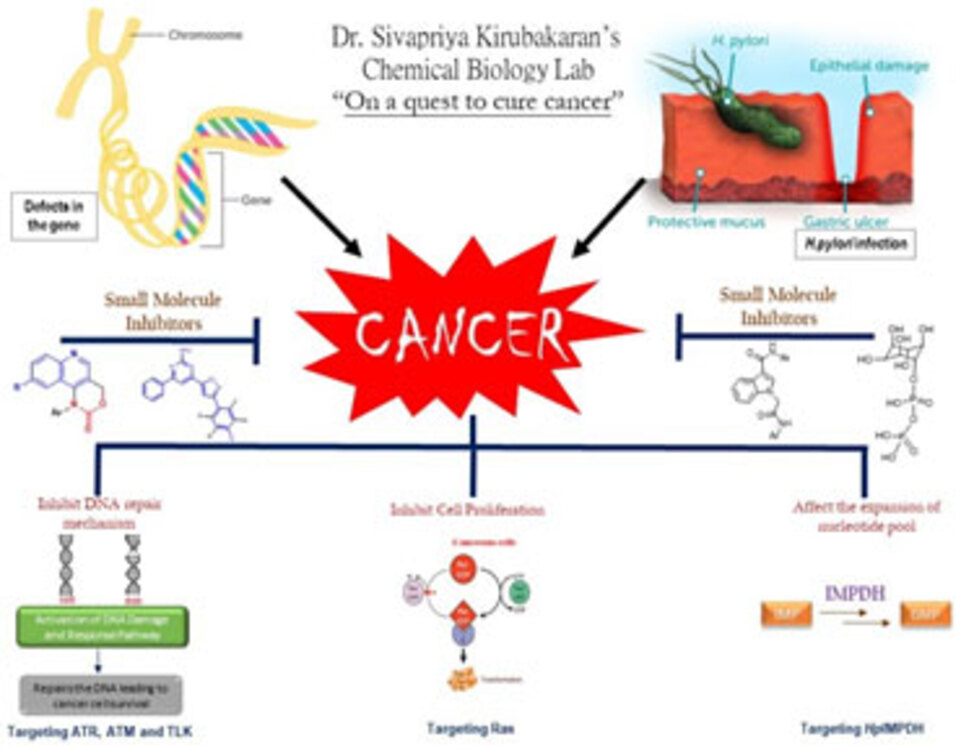
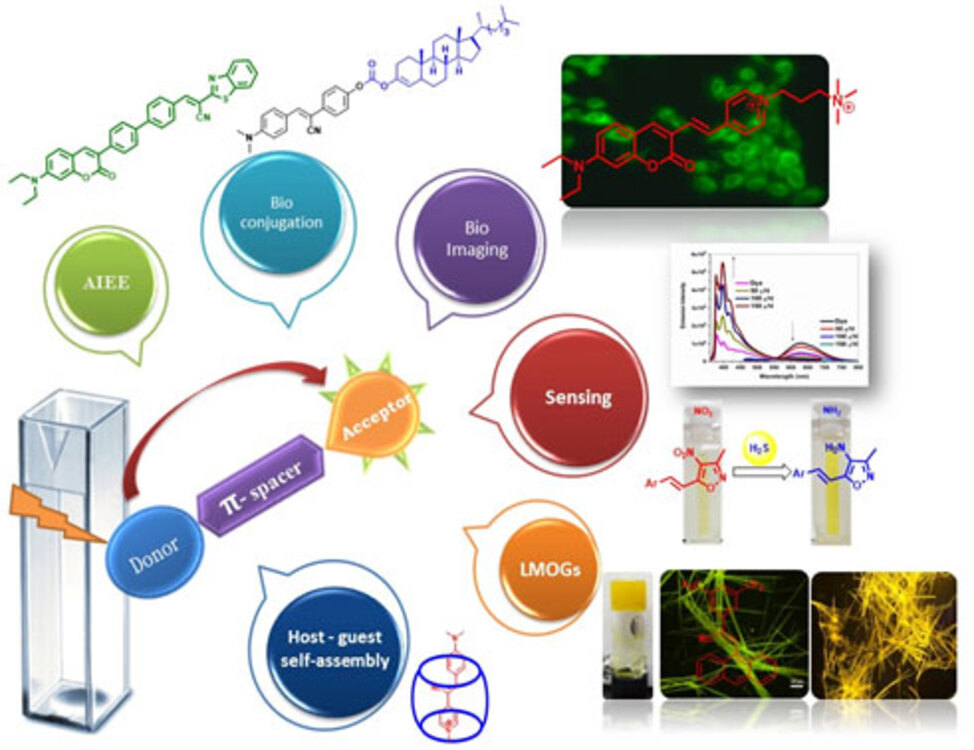
Sriram Kanvah
Our research is highly interdisciplinary that combines the design, synthesis and characterization of small organic fluorescent molecules followed by investigation of the light induced behaviour (absorption and fluorescence), and their stimuli responsive functions to evaluate their utility. We employ π-conjugated scaffold with push-pull substituents in our compound design to obtain near IR emission that gives us useful tools to visualize the cellular world enabling diagnostic applications. The research involves a combination of synthetic organic chemistry, instrumental methods, cell-culture and microscopy techniques.
Sudhanshu Sharma
Our main theme of research is material chemistry. Starting from simple and complex oxides, natural inorganic polymers (geopolymers), composites and nanoporous silica are synthesized and used for various applications. These applications are within the domain of heterogeneous gas solid catalysis, electrocatalysis and water purification. Apart from it we have active collaborations from theory groups and experimentalists from engineering disciplines. Our collaboration has widened our materials research towards alloys, graphene, multicomponent novel metallic systems. Some of the applications where we have expertise are listed below: (I) Heterogeneous catalysis (Solid-gas interfaces) – Methane activation, three-way catalysis, gas adsorption and desorption, Syn gas generation and CO2 activation/conversion to value added products; (II) Coke deposition during reforming reaction- Finding ways to reduce carbon deposition during gas-solid reaction. Correlation of carbon deposition with acidity and basicity of solid oxides and lattice oxygen content is actively carried out; (III) Fuel cell & clean energy- Ethanol and diesel reforming to generate clean hydrogen for fuel cells and defense application in collaboration with mechanical engineering discipline of IIT Gandhinagar; (IV) Electrocatalysis- Electro-reduction of carbon dioxide, Oxygen evolution & hydrogen evolution reaction, oxygen reduction reaction and understanding the metal oxides electrochemistry to trace the reduction behavior in the solid phase; (V) Tuning of material properties by doping- Synthesizing new oxides by doping and trying to tune the acid base properties oxygen storage capacity, photo physical and catalytic activity.

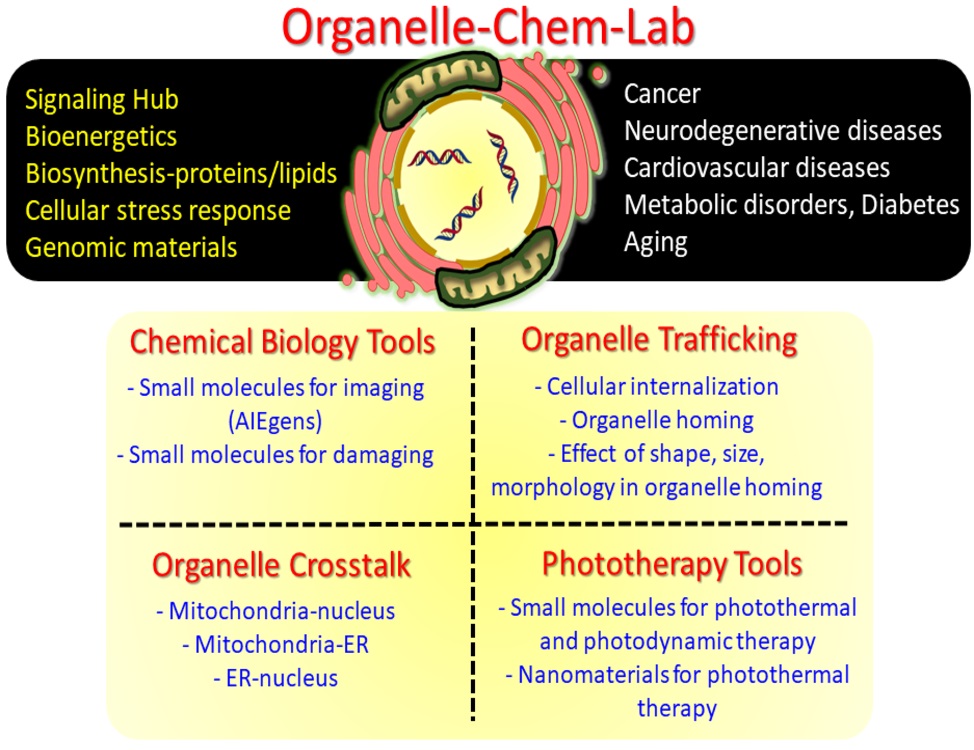
Sudipta Basu
In the last couple of decades, cancer has emerged as one of the most life-threatening diseases globally. Current chemotherapies that inhibit traditional targets or tyrosine kinases eventually led to drug resistance through intrinsic or extrinsic mechanisms. As a result, a huge effort has been dedicated to exploring novel targets and biomarkers to improve therapeutic outcomes and overcome drug resistance. In this context cellular organelles like mitochondria, endoplasmic reticulum (ER) and Golgi apparatus have emerged as major targets in cancer chemotherapy due to their central role in signaling hubs, bioenergetics, biosynthesis, cellular stress response and alternative location of genomic materials. However, the major challenge in current chemical biology is to spatial targeting of these organelles selectively in diseased states like cancer due to the lack of proper chemical tools and techniques. Further, the scenario becomes even more complicated due to the complex cross-talk between these organelles inside cancer cells. To address these challenges, we focused our research in four different but interlinked directions: (I) Develop novel small molecule chemical biology tools to illuminate and impair sub-cellular organelles; (II) Understand the cellular trafficking of the small molecules and self-assembled nanoscale probes into those organelles; (III) Explore the organelle microenvironment to understand the organelle cross-talk and use this information for therapeutic implications; (IV) Understand the light-matter interaction towards organelle targeted phototherapy
